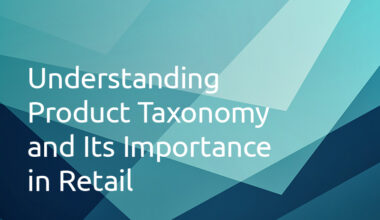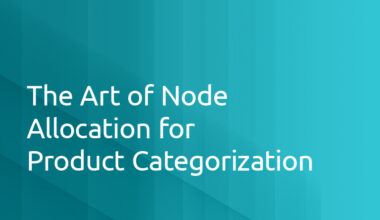Navigating the intricacies of ecommerce can often feel like exploring a vast, digital landscape. One such area is product taxonomy, a crucial aspect of any retail business, physical or online. However, mastering the ontology for robust retail product taxonomy can truly set a retailer apart from the crowd, optimizing searchability, customer engagement, and, ultimately, sales.
Understanding Ontology in the Context of Retail
Ontology, derived from philosophy, refers to the nature and relations of being. In ecommerce and information science, it signifies a set of concepts and categories that manifest the properties and relations between them for a particular domain—in this case, retail products.
Ontology serves as the backbone for product taxonomy, helping retailers logically categorize their products based on multiple dimensions such as function, form, purpose, materials, and more. It provides a formal, common language, reducing ambiguity and enhancing understanding for both consumers and search engines.
The Interplay of Ontology and Product Taxonomy
Understanding the ontology of products helps build a robust product taxonomy, leading to more streamlined, user-friendly ecommerce platforms. Here’s how:
1. Improved Searchability: An ontology-based taxonomy allows customers to use various attributes or relations to find the exact product they want, improving product visibility and user satisfaction.
2. Personalized User Experience: An ontology-based product taxonomy can accommodate user-specific terminologies, delivering a personalized browsing experience, and fostering customer loyalty.
3. Enhanced SEO: Structured, ontology-driven taxonomy helps search engines better understand your site’s content, potentially boosting your SEO ranking.
Tips for Mastering Ontology in Product Taxonomy
1. Product Understanding: Comprehensive knowledge about the product is vital. Knowing the product’s function, components, properties, and customer usage can help identify relevant categories and relations.
2. Customer Centricity: Align your ontology with customer needs, expectations, and terminologies. Use analytics to understand how customers search and browse products.
3. Flexibility and Scalability: Ensure your ontology can accommodate a range of products and adjust to evolving market trends and customer demands.
4. Consistency: Consistent use of categories and attributes across the platform is essential to avoid confusion and enhance the user experience.
The Power of Ontology in Retail
In the highly competitive ecommerce landscape, retailers must continuously seek to optimize their digital platforms. Mastering ontology for a robust retail product taxonomy is an effective strategy to enhance user experience, increase product visibility, and ultimately drive sales. With comprehensive knowledge about your products and a deep understanding of your customers, you can build an ontology that brings structure, clarity, and dynamism to your retail platform.
Reach out to us today to discuss all things product taxonomy.
 1.416.619.5349 Ext.325
1.416.619.5349 Ext.325 







